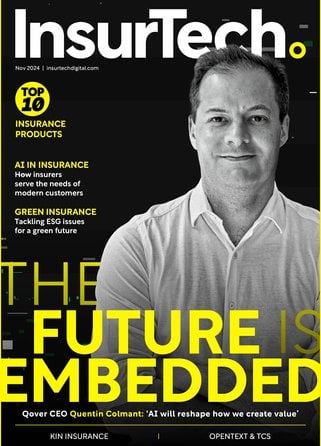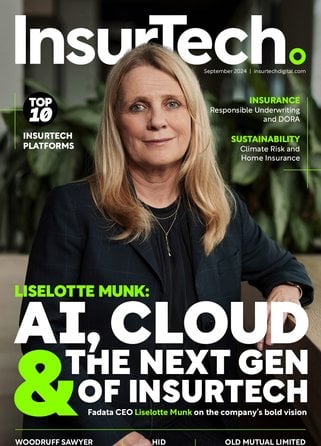Bain & Co: Insurtech Key to Closing Protection Gaps

The insurance technology sector faces significant opportunity amid mounting protection challenges, according to Bain & Company's report "Bridging the Protection Gap: Affordability, Access, and Risk Prevention."
Traditional property and casualty (P&C) providers struggle with increasingly unaffordable premium rates, creating space for technology-driven solutions in the market.
The report identifies a fundamental mismatch between risk pricing and profitability that creates coverage voids, particularly in catastrophe-prone regions.
Many homeowners have had to forgo property coverage altogether, creating what the industry terms "insurance deserts" that mortgage lenders might abandon.
The protection gaps identified present substantial market opportunities. By 2030, only one-quarter to one-third of natural disaster damage will have insurance coverage, while mortality protection will cover less than half of needs.
These gaps create space for embedded insurance platforms—technology that integrates coverage directly into purchase journeys.
In the United States, property premiums have risen at double-digit rates in recent years, while regulators in certain states prevent insurers from charging rates that reflect increased hazards.
This regulatory environment creates challenges for both traditional insurers and insurance providers.
Technology Transforms Risk Management Approach
Climate-related perils and cyber threats require innovative approaches from insurance technology firms.
Swiss Re data shows global inflation-adjusted insured losses from natural catastrophes grew at nearly 6% annually from 1994 to 2023, outpacing global GDP growth by more than double.
The commercial climate solutions market is expected to double to €60bn (US$67.9bn) by 2030, necessitating more resilient risk models.
Meanwhile, ransomware attacks continue to escalate, with the report noting that generative AI could further expand the cyber insurance market.
Prevention technology has become central to insurance strategy. GOQii, a preventive healthcare platform, employs behavioural science principles and wearable devices to encourage healthier behaviours among policyholders.
Several automotive insurers now integrate telematics systems to adjust premiums based on driving data collected in real-time.
AI and Alternative Distribution Models Transform Market
The rapid proliferation of unstructured data—from call logs to dashcam videos—coupled with artificial intelligence applications presents opportunities to enhance affordability and access.
“We anticipate that AI-driven improvements will allow insurers to realise a 10%–15% revenue uplift, up to 30% functional cost savings, and a 30%–50% reduction in P&C leakage,” the report states.
Embedded insurance models gain traction primarily in personal P&C lines. Although adoption has been strong for products such as travel insurance, scalability in auto or home remains uncertain, though pilots are underway.
Allianz, the global insurance provider, embeds insurance through partnerships with more than 40 vehicle manufacturers.
The report notes alternative capital instruments, including collateralised reinsurance, insurance-linked securities, and sidecars, increasingly fund insurance growth.
These structures have established roles in the P&C sector and now appear more frequently in life insurance for new financing arrangements.
For life insurance innovation, digital platforms that simplify underwriting and purchasing processes address persistent relevance issues.
A LIMRA survey found nearly half of US Generation Z and millennial consumers report insufficient life insurance coverage, highlighting market potential for more flexible and portable protection solutions.
The report also highlights the looming "retirement cliff" in the insurance industry, with critical functions such as underwriting and claims potentially facing disruption as seasoned professionals retire.
Technology solutions, particularly AI-powered tools, could help reskill employees and maintain institutional knowledge.
"The insurance industry is at a turning point. Generating value from AI and modernising data systems will be pivotal in shaping carriers' fortunes," the report concludes.
"Simultaneously, insurers must start to transform their workforces, particularly in mission-critical roles like underwriting and claims, ensuring analytical and technical fluency to operate in an AI-driven landscape."
Make sure you check out the latest industry news and insights at InsurTech and be part of the conversation at our global conference series, FinTech LIVE.
Discover all our upcoming events and secure your tickets today.
InsurTech is a BizClik brand
Featured Articles
Deloitte predicts revenue growth to US$49.5bn by 2030 as predict-and-prevent model gains traction
As a part of its Climate School project, AXA Climate has launched a course promoting awareness of marine ecosystems and the risks posed by climate change
UK commercial insurer GOAT Insurance acquires IGG Insurance’s book of business as part of its expansion strategy




